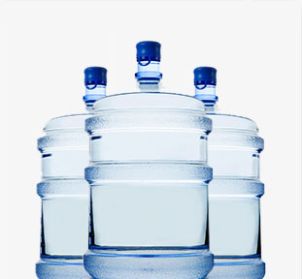
The Hydrological Cycle: Following the Cycle of Water Around the Earth

You turn on your washing machine or jump into the shower or grab a quick glass of water from your kitchen sink—who really thinks much about how that water came to be? It’s water—turn the faucet knob and there it is, right?
The water we use and depend on travels a rather remarkable journey before it ever gets to us.
The hydrological cycle, or water cycle, is what keeps the planet and all of us hydrated. The cycle starts with the sun, which heats the oceans and evaporates water that rises into the atmosphere as vapor, creating clouds. This moisture moves across the earth until it becomes precipitation (rain, snow, sleet, etc), which falls to Earth and then forms runoff, streams, lakes, and ultimately the ocean. Some of this water also penetrates the surface to become groundwater, feeding underground aquifers that can be larger than the largest freshwater lakes in the world (2). Pretty amazing system, isn’t it?
So why should you be at all concerned with the Earth’s hydrological cycle? Simple: because everything water touches in the cycle affects the water you ultimately ingest.
Porous rocks, granite, soil, rivers and lakes and oceans, even the air that water passes through makes an impact. Magnesium, calcium, mercury, iron, lead, arsenic, acids, and other elements are absorbed by water as it travels through its cycle (4). If there is chemical runoff from a nearby manufacturing plant—those chemicals can get into your water (4). Agricultural runoff from farms can add pesticides and fertilizers to the groundwater or nearby rivers and lakes (4). As remarkable as the hydrological cycle is, Mother Nature and human beings can affect the quality of your water.
The vast majority of water delivered in North America is from municipal water supplies, which are regularly tested, and provide safe drinking water (6). You can contact your local municipal water supplier, or visit their webpage, to get a report of water testing. However, you may also want to know more about the quality of the water as it arrives in your home, or know more about other contaminants not tested for by the EPA. These might have aesthetic impacts on your home. Or you may be on a private well, which the EPA recommends performing an annual water test (5).
Your local Culligan water expert will be familiar with the water conditions where you live and will be able to test the quality of the water coming into your house. Based on the status of your water, your Culligan water expert can suggest the appropriate expert solutions to make sure you have the best water possible in your home.
View the Hydrological Cycle infographic to see how the cycle of water is effected by nature and human activities.
Sources:
http://ga.water.usgs.gov/edu/watercycle.html
http://ww2010.atmos.uiuc.edu/(Gh)/guides/mtr/hyd/smry.rxml
http://water.epa.gov/drink/local/
http://water.epa.gov/drink/info/upload/2005_09_14_faq_fs_homewatertesting.pdf
http://water.epa.gov/infrastructure/drinkingwater/pws/index.cfm
Find A Location Near Me

Schedule Your Free
In-Home Water Test
Get better water in your home by scheduling an appointment with your local Culligan Water Expert.
Discover More
See All Articles

PFAS Regulations in the U.S.
Learn about PFAS and the latest EPA guidelines for better water quality.
15 min read

Explore

Explore
Our Products

Water Softeners
With any of our soft water systems, get more out of your water-using appliances while spending less on energy and detergent.
View Products

Water Delivery
There’s never been a better time to enjoy the convenience of scheduled bottled water deliveries from the Culligan® Water Experts
View Products

Water Filtration Systems
Culligan's water filtration systems have improved water quality for thousands of families worldwide.
View Products
